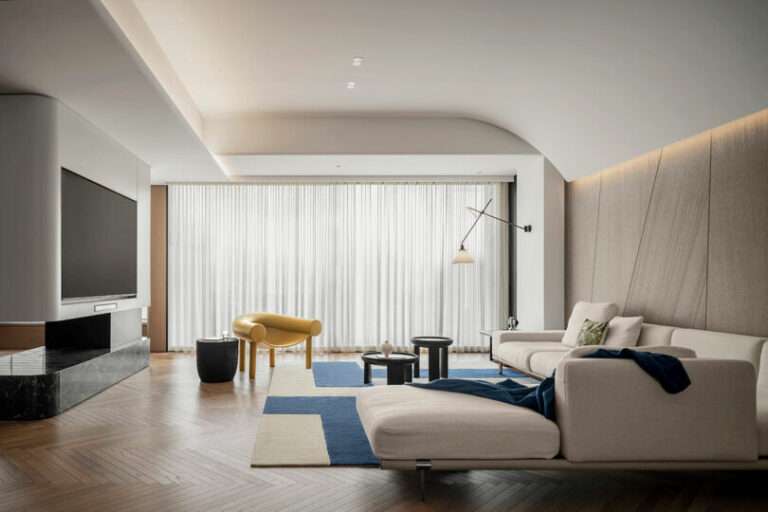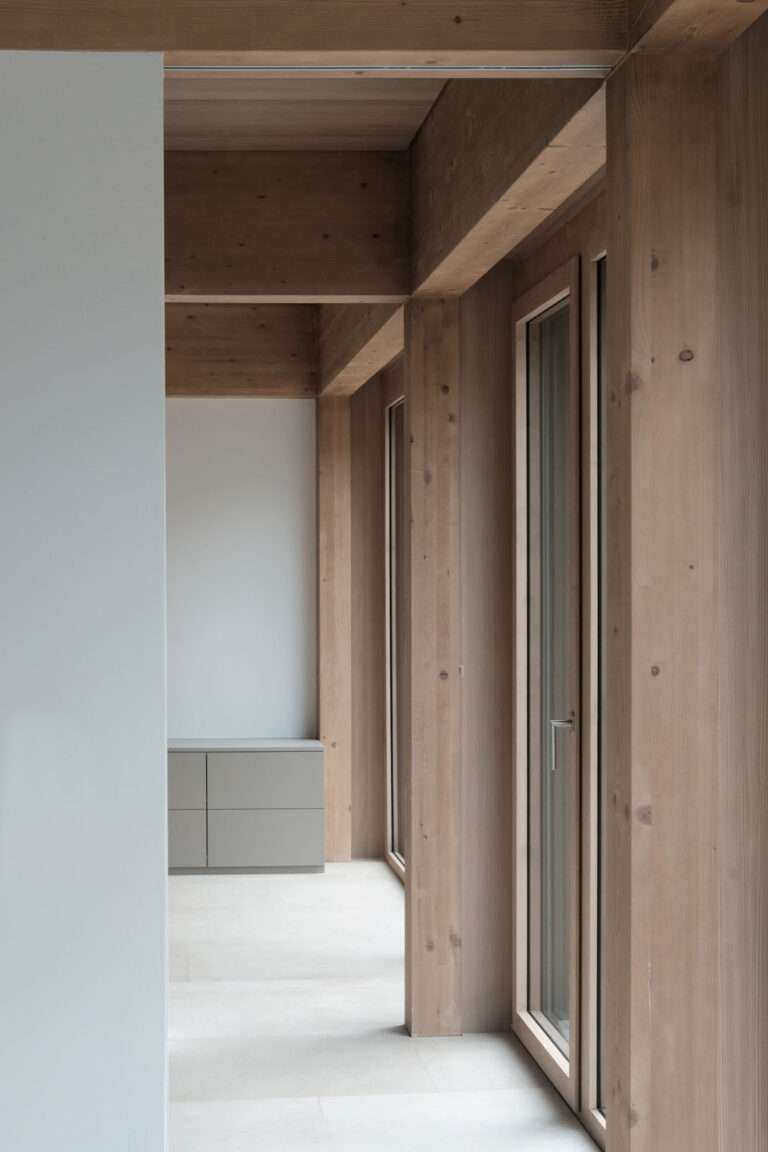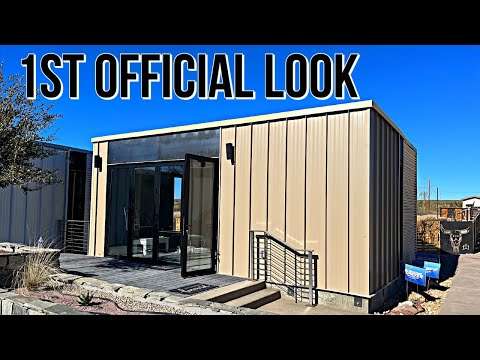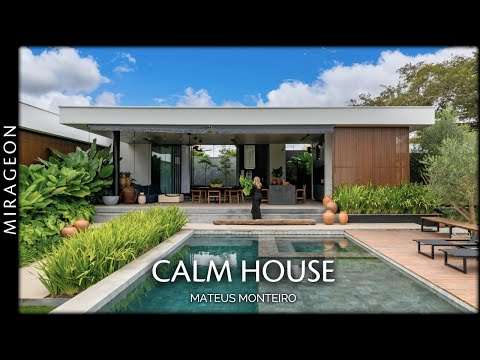When Karim El-Ishmawi was a child he often visited a home located in a small town in Bavaria, Germany. The memorable residence, integrated into the mountainside, was designed by Hans Ziegler. Spacious and multilayered on the inside, the structure is barely visible from the outside, and to the young El-Ishmawi it was comparable to a cave. As he explored it, his interest in architecture was ignited.
As a teenager, Karim El-Ishmawi experimented with different forms of expression, from graffiti and film to installations. The former East Berlin during the 1990s was a place where his imagination was allowed to flourish.
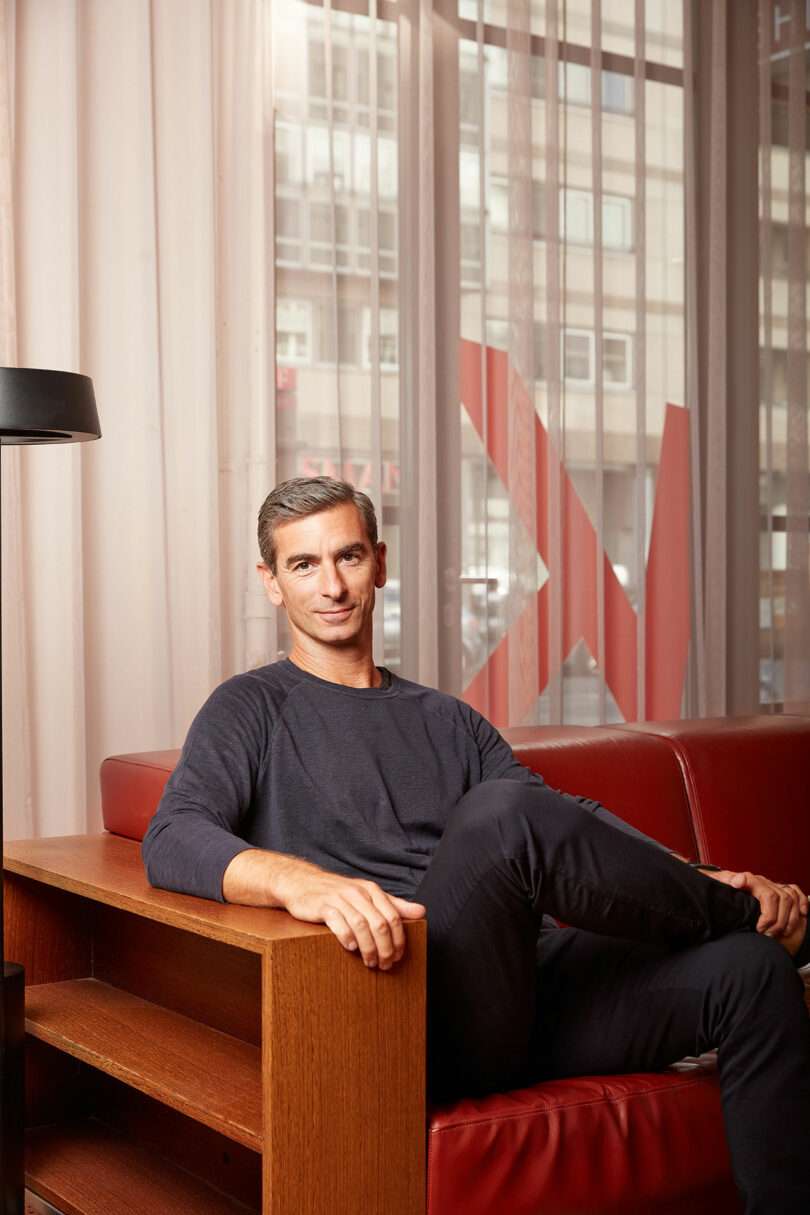
Karim El-Ishmawi Photo: Sebastian Dorken
With his pals (and co-founders) Chris Middleton and Martin Jacobs, El-Ishmawi was able to experiment and explore in new ways. “My passion has always been creativity in a collective,” he says. “Simply putting ideas into practice seemed to be a natural phenomenon in this constellation. I am firmly convinced that these two people unleashed my drive and creativity more than my parents or anyone else ever could have.”
El-Ishmawi never had a set career path, but in 2005 the trio founded Kinzo. Noted for a holistic and participatory design approach, the team conceives new living and working environments. Responsible for project management and strategy, El-Ishmawi plans every facet from the perspective of future users.
No matter what he dreams up, the end result is better because of his collaboration with Jacobs and Middleton. “We do what comes along and is interesting,” El-Ishmawi notes. “It is certainly easier to cast a team of experts with clearly defined skills, and a business plan within an existing network of parents and acquaintances. But the feeling of doing something like this with friends is unbeatable.”
Today, Karim El-Ishmawi joins us for Friday Five!
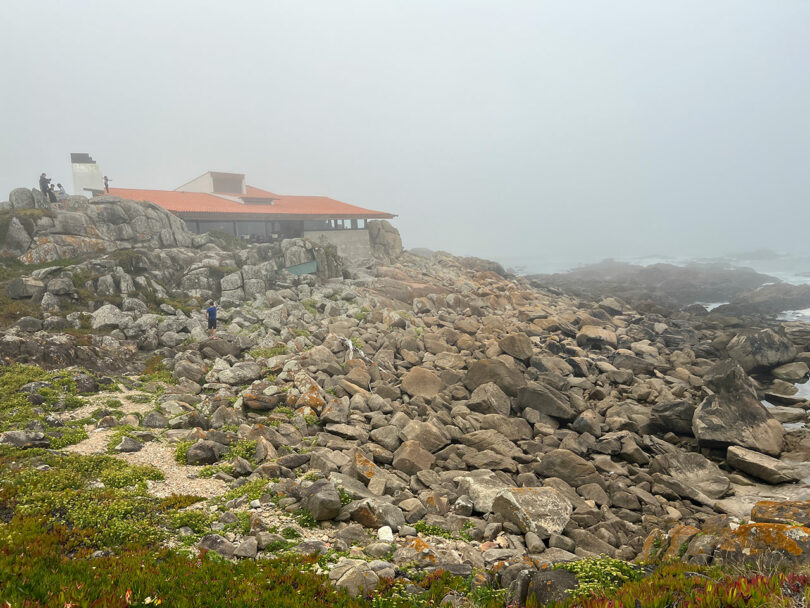
Photo: Karim El-Ishmawi
1. Alvaro Siza Boa Nova Tea Pavilion (1963)
My partner Chris and I often go on vacation together with our families. Most recently we were in Portugal in the Porto area. For architects, it is a place of pilgrimage, and for the family, simply an outstanding experience. Siza’s projects in and around town are as well integrated into everyday life as they are into the landscape. Take the Boa Nova Tea House or the pools in Leça da Palmeira, for example: They are remarkably scenographic and yet somehow feels benevolent and modest.
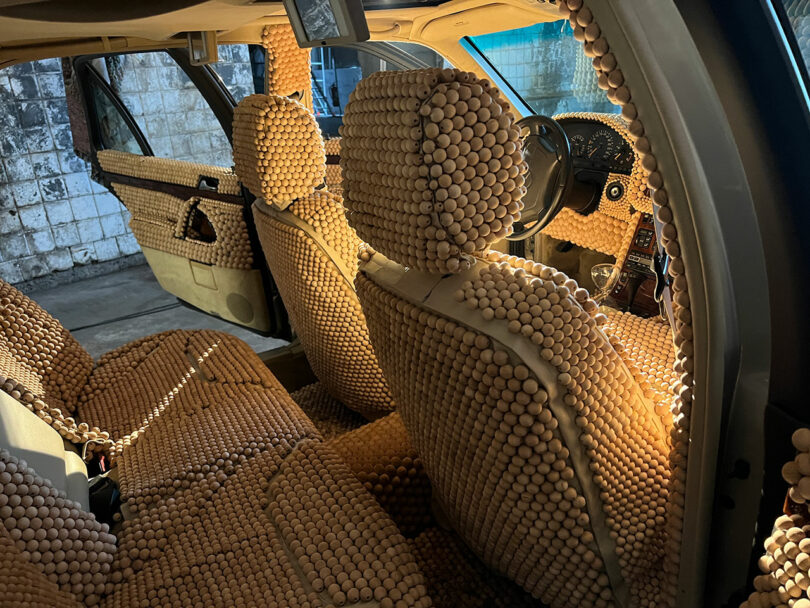
Photo: Karim El-Ishmawi
This is such a Berlin collaboration! Together with fashion/art project BLESS, architect Sam Chermayeff furnished a classic Mercedes-Benz with an interior made of wooden beads and a stove in the trunk to create a mobile sauna – The Saunarider was last seen in the Salone in Milan in 2023. Hot shit!
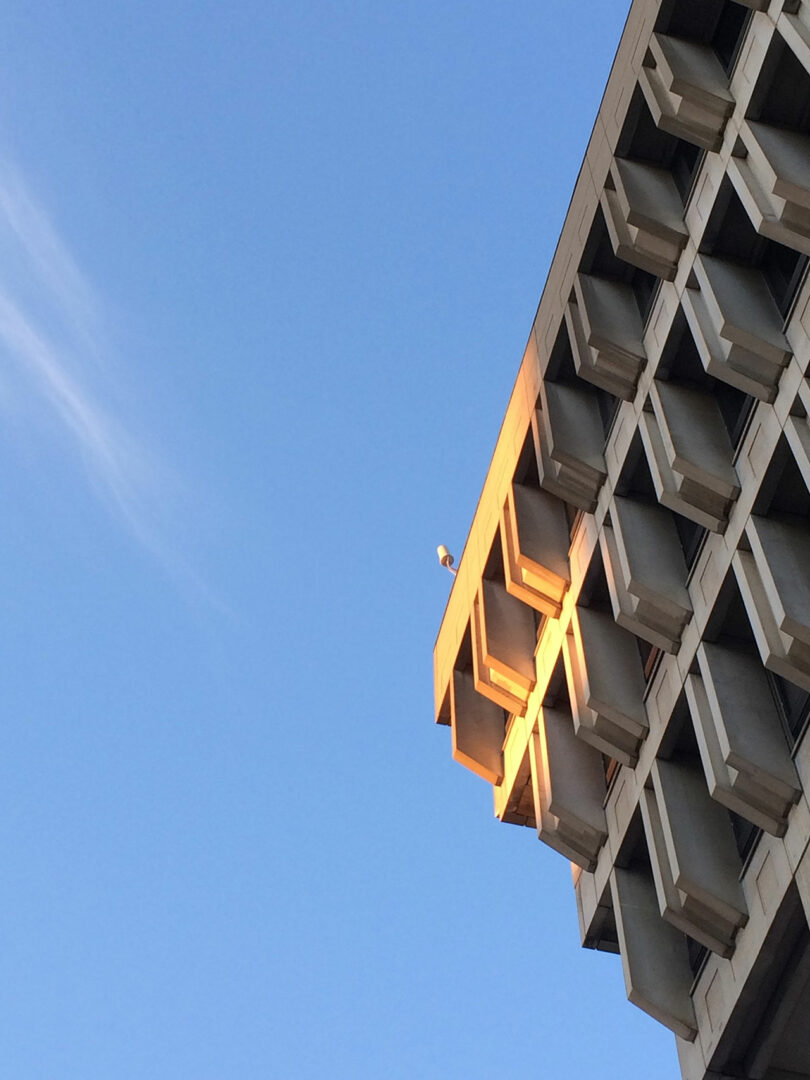
Photo: Karim El-Ishmawi
In 2015, I spent some time in Boston, as I was a visiting professor at the Wentworth Institute. My first tour of the city took me straight to the brutalist icon. I am amazed of how close the ugly and the sublime can be.
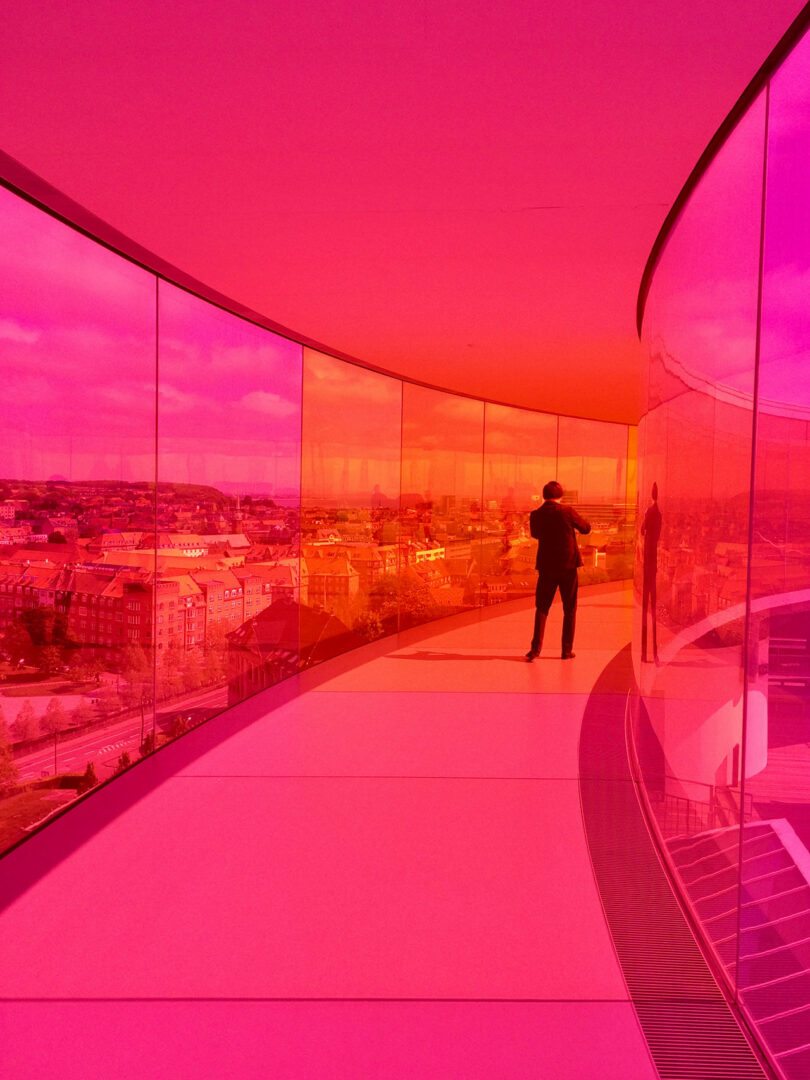
Photo: Karim El-Ishmawi
What started as a pretty standard business trip to Aarhus quickly turned into the epitome of aesthetic sensory modulation: a visit to Olafur Eliasson’s spectral circle atop the ARoS art museum.
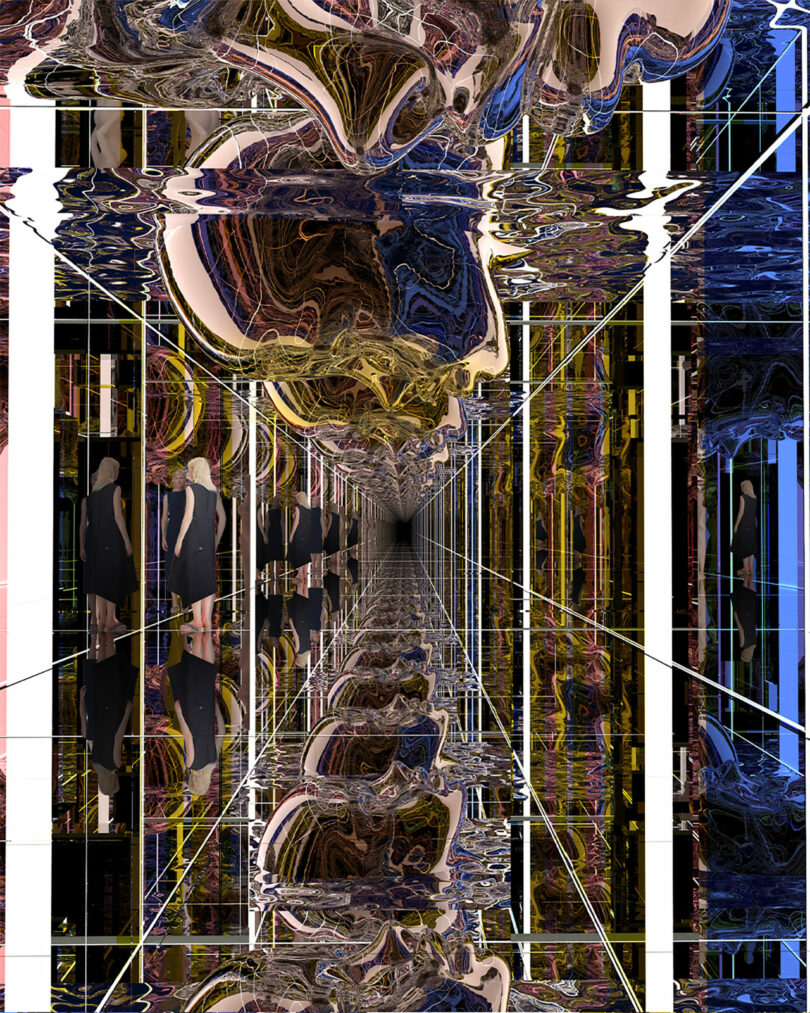
Photo: Andrea Bonso
I saw this installation in the Alcova during Milan Design Week 2023: The interior of a former cold storage room was entirely covered with metallized sheets, and due to the oxidation and coloration the reflection of light made me feel like I was in a kaleidoscope. The guys from design studio Materica applied real-metal coating to every material to great effect. Shiny and mesmerizing!
Works by Kinzo:
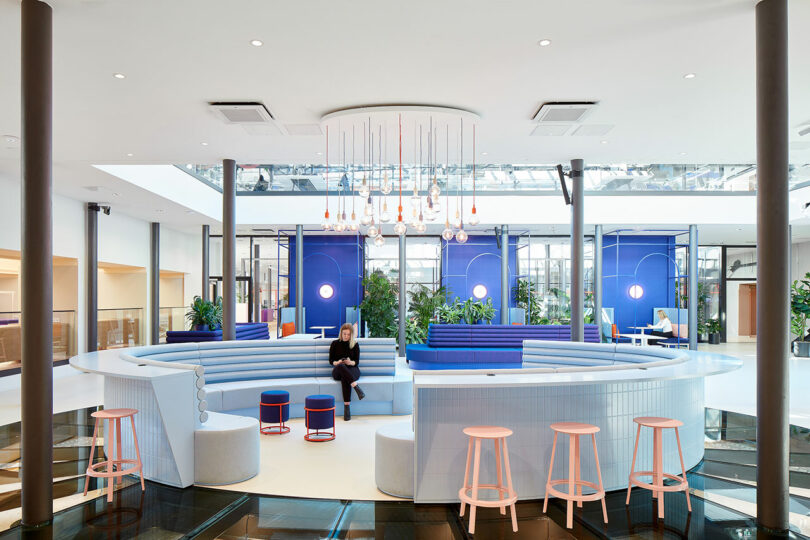
Photo: Sebastian Dörken
Admiralspalast (2023)
The Admiralspalast on Berlin’s Friedrichstraße, an iconic building since 1911, has been transformed by Kinzo Architekten into the headquarters for a digital service provider. This project merges the building’s rich history with a forward-looking workspace. Originally featuring an ice skating rink, bowling alleys, a cinema, and a Roman-Russian spa, the Admiralspalast embodied the opulence of Berlin’s Golden Twenties. Kinzo Architekten preserved and integrated historical elements like Art Nouveau mosaics and Art Deco windows into the new design, creating a unique blend of past and present. The redesigned office spans three floors, offering spaces for collaboration, retreat, and individual work, aiming to bring employees back from remote work. Highlights include a communal area with a bench modeled after the former ladies’ pool, a relaxation room adapted for modern use, and a large hall with a circumferential gallery and various themed rooms.
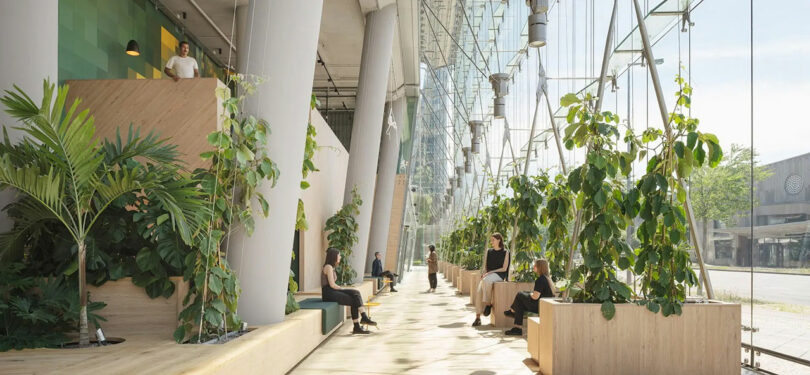
Photo: Schnepp Renou
Das Center Potsdamer Platz (2024)
Kinzo Architekten revitalized the Sony Center at Potsdamer Platz, transforming it into a dynamic hub for community and participation. The holistic placemaking concept enhances Potsdamer Platz as a vibrant meeting place for visitors and an attractive location for businesses, retailers, and restaurants. The project involved developing target-oriented usage formats for commercial and public spaces to seamlessly re-integrate the site into the urban fabric. Lobby D, once merely a transit space, now offers two floors of work and meeting areas, including a separate workshop room. The renovation involved dismantling the interior façade and raising the mezzanine ceiling. Additionally, the Passerelle was converted into a bicycle parking area with space for over 200 bicycles, connecting the Potsdamer Platz subway and S-Bahn station with the Sony Center Forum.
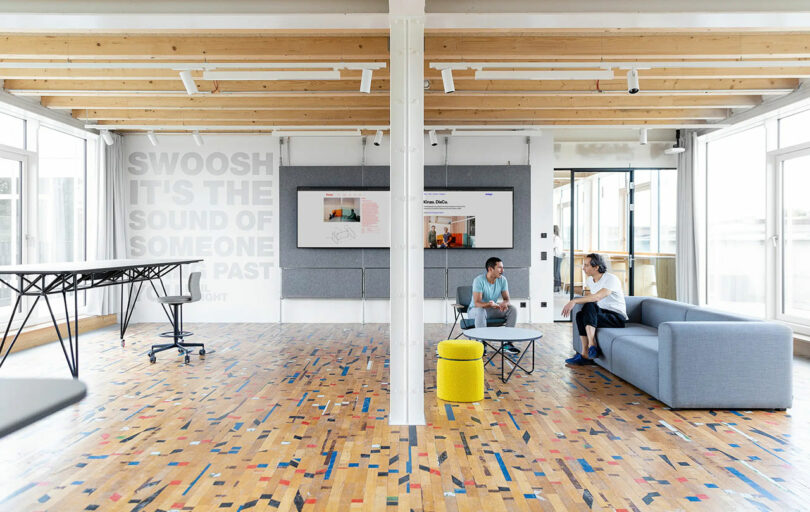
Photo: Sebastian Dörken
Nike One Central HQ (2020)
The Nike Central HQ, located in Berlin-Friedrichshain, seamlessly integrates into the urban fabric of the neighborhood, creating a diverse office campus for up to 300 employees. It features flexible work areas, influencer and athlete spaces, showrooms, and sports facilities. The building, a blend of an old carpentry workshop and new constructions, transitions from an intact old structure to a partially new middle section and a completely new third part that matches the original façade. The campus includes the City Hub, a central café and reception area next to an outdoor basketball court, and a roof terrace with urban gardening. Only 30% of the space is standard office area, emphasizing a dynamic and agile working environment. Recycled materials and finishes reflect the brand’s origins and philosophy, with distinct branding for Nike and Converse.
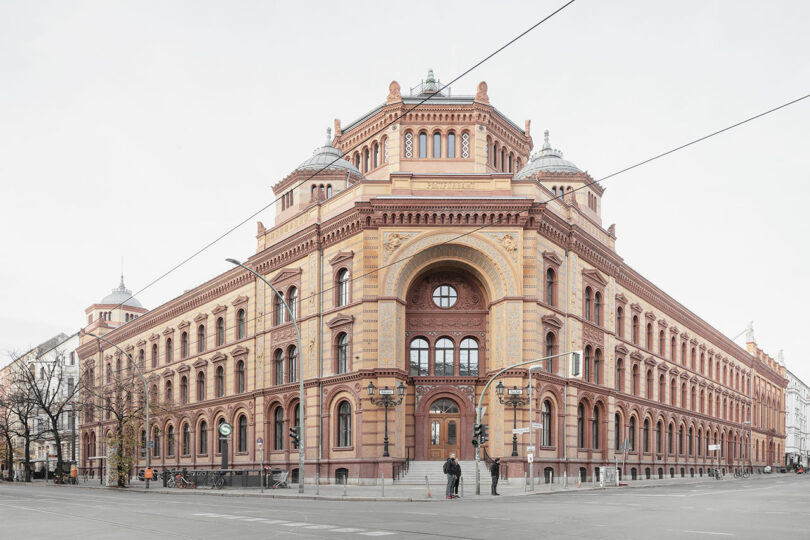
Photo: Schnepp Renou
Postfuhramt (2022)
Following various interim uses by Berlin’s art, culture, and club scene, the Kaiserliches Postfuhramt, a former post office, was acquired by a new owner in 2012 and has since been renovated. Transformed both architecturally and as a historic preservation project by Kinzo iit now serves as an innovation center for a medical technology company, featuring exhibition, conference, and training rooms. Kinzo’s role extended beyond interior design to exploring and mapping the building’s layers, which were meticulously restored by conservators to integrate historical fragments into the overall design. New elements emphasize the use of steel, either raw or matte black, reflecting the industrial heritage of the Postfuhramt. The redesigned workspace aims to support flexible team and project structures, exemplified in the attic’s iLofts, which offer versatile office spaces, meeting rooms, lounges, retreats, and a library. The historical fragmentation is both felt and partially visible, harmoniously blending with contemporary interventions.

